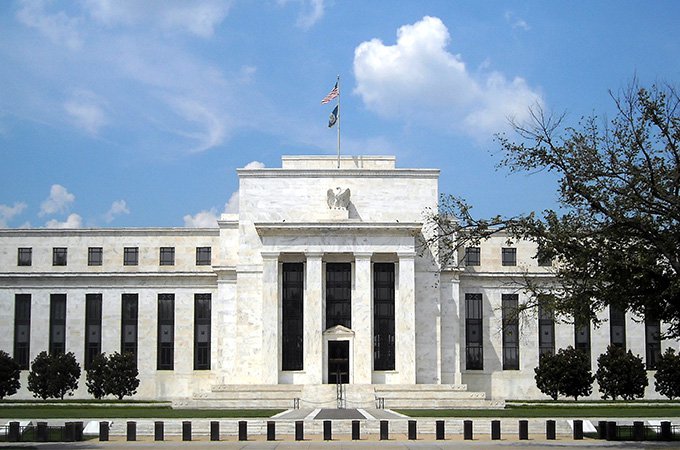Bitcoin and the Blockchain Take the Stage for International Summit of Central Banks at the Federal Reserve
When Satoshi Nakamoto released the Bitcoin white paper in 2008, little did Bitcoin’s creator know that less than 10 years later, Federal Reserve Chair Janet Yellen would be encouraging central banks around the world to take a closer look at the benefits of Bitcoin and blockchain technology to improve the world’s financial systems.
In her remarks to the International Conference on Policy Challenges for the Financial Sector, the chair of the Board of Governors of the Federal Reserve acknowledged heightened concerns about cybersecurity, and said banks must move forward into the digital age and learn how to apply Bitcoin, blockchain and distributed ledger technologies.
At a low-key three-day conference in Washington, D.C., last week organized by the Federal Reserve, the World Bank and the International Monetary Fund, more than 90 central banks from around the world heard from members of the Bitcoin community, including Perianne Boring, founder and president of the Chamber of Digital Commerce, Bloq CEO Jeff Garzik and Chain CEO Adam Ludwin.
Conference participants were told that their discussions would be off the record – no recordings or videos would be allowed. As a result, the normally conservative crowd may have been freer to explore the possibilities of a whole new way of looking at money and finances.
Bitcoin Luminaries Shine Light on New Technologies for Conference Participants
In a keynote address, Ludwin told central bankers they will issue national currencies in digital form in the near future. He cited many reasons for this shift, including:
1. Banking and finance are next up to digitalize and globalize, just as music, publishing and communications sectors have grown and benefitted from new technologies. He noted that soon, the phrase “cross-border payment” will make about as much sense as “cross-border email.”
2. Bitcoin is into its seventh year and is still showing robust resilience and steady growth as the volume of transactions, increasing steadily, is now at 250,000 a day.
3. Multisig and other technologies provide more robust security than traditional banknotes and systems, and more flexibility than current centralized systems.
4. The efficiencies and cost savings of these new technologies will be the strongest reason to digitalize. (At this point in the presentation Ludwin brought out his phone and sent a Bitcoin donation to Wikipedia in one easy step – likely the first Bitcoin donation sent from the Federal Reserve.)
5. Other financial institutions are already building new networks to digitalize assets such as securities and currencies, so they can move more efficiently and securely.
6. Central banks will want to be in a better position to influence liquidity in the increasingly important capital markets that operate outside of depository institutions.
Ludwin went on to note that ultimately, blockchain networks will lead to a safer and better payments system. And central bank digital currency will be the foundation of that system.
Bloq’s Garzik stressed that the greatest advantages of digital currencies will be seen first in the developing world. “Some of the greatest potential benefits of blockchain technology are going to be first seen and actively leveraged in emerging nations,” he said.
Garzik told the conference that the innovative elements of blockchain technology, including trust shifting, decentralization, cryptography and immutability will guarantee its future success in the banking and financial sectors.
Boring, of the Chamber of Digital Commerce, encouraged the Federal Reserve and central banks to focus on and embrace innovation in blockchain and distributed ledger technology.
“We believe blockchain technologies are capable of providing the Fed and other regulators with next-generation tools to fulfill their mission of monitoring the safety and soundness of the financial system more effectively,” Boring told American Banker.
Central Banks Already Have Begun the Process of Exploring Blockchain Technology
As has been previously covered by Bitcoin Magazine, the Federal Reserve and the People’s Bank of China have both been active in studying the emergence of digital currencies .On February 3, David Andolfatto, Vice President of the Federal Reserve Bank of St. Louis, wrote a blog post based on a presentation he gave at the International Workshop on P2P Financial Systems 2015. The title of the blog post is “Fedcoin: On the Desirability of a Government Cryptocurrency.”
Perhaps the most surprising thing is that an inherently conservative financial sector ‒ particularly central banks ‒ have responded so positively to blockchain technology in such a historically short period of time.
Other speakers at the three-day conference included:
- Fredrik Voss, Vice President of Blockchain Innovation, NASDAQ
- Tom Jessop, Managing Director of Technology Business Development, Goldman Sachs
- Alan McIntyre, Senior Managing Director of Global Banking, Accenture
- Hollis Hart, President, Citi International Franchise Management
- Carolyn Wilkins, Senior Deputy Governor, Bank of Canada
- Fritz Zurbrügg, Vice-Chairman of the Governing Board, Swiss National Bank
- Sheila M’Mbijjewe, Deputy Governor, Central Bank of Kenya
- Lorenza Martínez Trigueros, Director General of Payment Systems and Corporate Services, Banco de México
- Konstantin Peric, Deputy Director of Financial Services for the Poor, Bill and Melinda Gates Foundation
- Shamina Singh, Executive Director, MasterCard Center for Inclusive Growth
- Alejandro Picos, Vice President, PayPal
- Min Liao, Director-General, China Banking Regulatory Commission, Shanghai Office
PhotoAgnosticPreachersKid/Creative Commons
The post Bitcoin and the Blockchain Take the Stage for International Summit of Central Banks at the Federal Reserve appeared first on Bitcoin Magazine.



